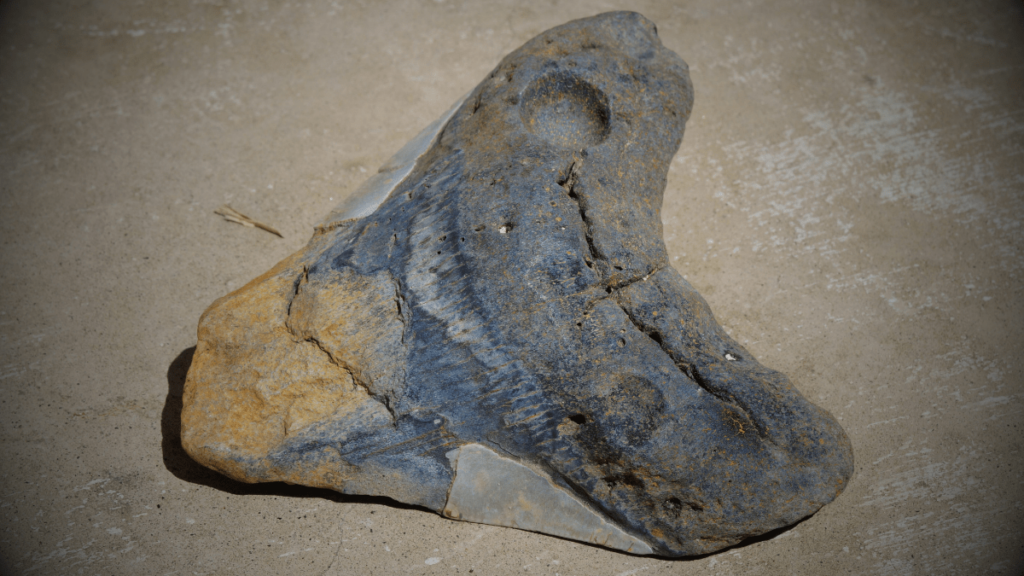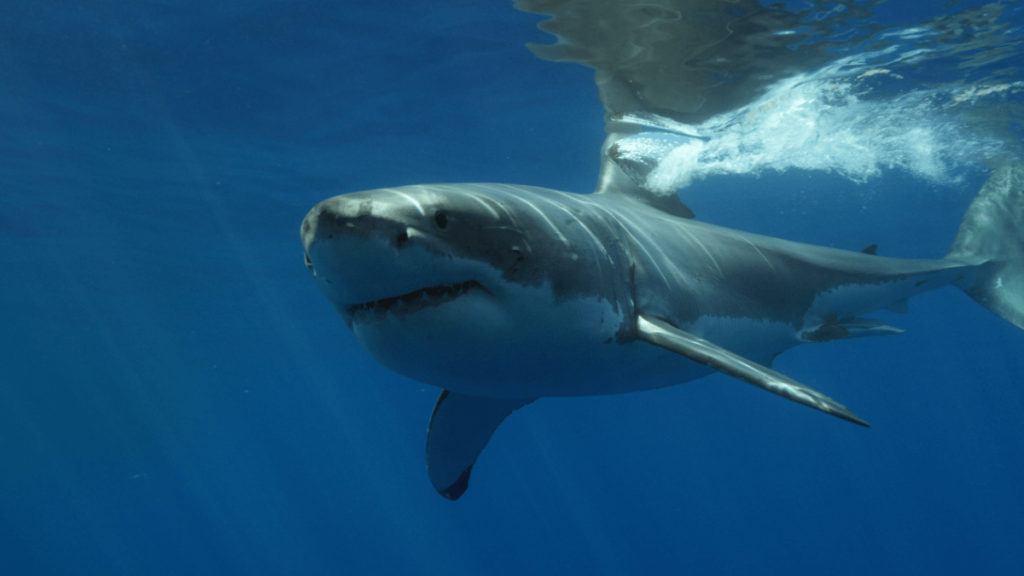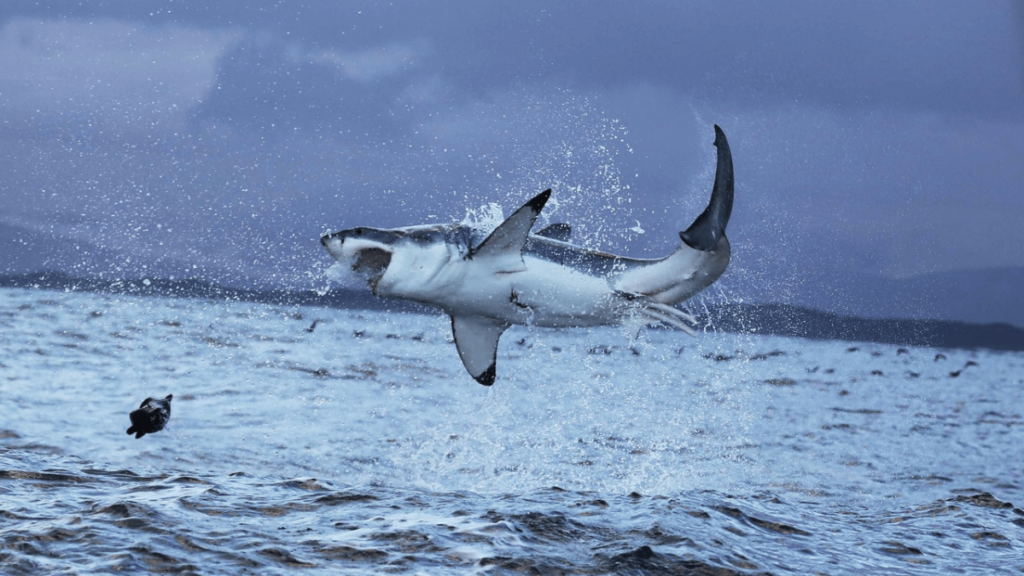If there is another shark as iconic as the great white, it’s the megalodon. This extinct prehistoric shark has been capturing imaginations for many years, but it was the 2018 Jason Statham vehicle The Meg that really catapulted it into the public eye.
Needless to say, that movie is not exactly realistic. But it has had many people scratching their heads and wondering: how different was a megalodon from a great white shark? Obviously, it was bigger, but were there any other differences between these two iconic sharks?
Fear not, dear reader – we’re here to enlighten you. Without further ado, let’s take a look at the biggest differences between the megalodon vs great white.
Wait, Are Megalodons Extinct?

Let’s get the most obvious difference out of the way – great white sharks exist today, whereas megalodons are extinct.
This might lead people to believe that, much like cavemen and dinosaurs, there was no overlap between the great whites and the megalodon. Surprisingly, that’s not actually the case, and the two sharks did coexist for a while.
This is not because the megalodon went extinct anytime recently, however. Rather, it’s because the great white has been around for a really, really long time. Great whites have swum the seas for an astonishing four million years without any noticeable evolution, which makes them as prehistoric as megalodons themselves. As for the giant sharks? They first came on the scene about 23 million years ago and only went extinct 3.6 million years ago.
This means that the two sharks shared the seas for around 400,000 years – no small amount of time.
Megalodon Vs Great White Size Comparison

It almost goes without saying – the megalodon was much, much bigger than the great white shark.
Great white sharks average between 3.5-5 meters, with females being much bigger than males. Megalodons, on the other hand, are estimated to have been about three times that size, with the largest specimens reaching about 15 meters – or the length of a school bus.
Sadly, it’s only possible to estimate the size of the Megalodon. This is because it had – like many sharks – a cartilaginous skeleton, which is quickly consumed by bacteria upon death and cannot be fossilized. Their size is therefore estimated from their teeth.
Bite Force
As with most of the other categories, the megalodon is estimated to be the clear winner when it comes to bite force.
The great white shark is no slouch when it comes to bite force, with an average force of 18,000 Newtons. If this doesn’t mean too much in isolation, it basically means that the great white has possibly the most powerful bite in all of nature, with a bite roughly four times stronger than that of a lion and 20 times stronger than that of human beings.
”The Megalodon shark had a mouth the size of a subway door, teeth the size of a human palm, and could grow more than 50 feet long.”
– Great White Sharks May Have Driven Megalodons into Extinction
The megalodon, meanwhile, had an estimated bite force of around 180,000 Newtons – ten times stronger than that of a great white, eight times stronger than a lion’s, and 200 times stronger than a human’s. It’s safe to say, then, that anything that got bitten by a megalodon stayed bitten.
Diet
Despite the stark contrast in the size of these two marine monsters, it’s believed that they actually went after the same kind of prey.
By analyzing the shape and size of megalodon teeth, as well as their zinc content, marine paleontologists believe that the massive shark preyed upon cetaceans – that is to say, dolphins, whales, and porpoises. It’s believed that both sharks also fed upon pinnipeds (seals and sea lions).
Unfortunately, the overlap that this led to with great whites – who were smaller and more agile hunters and, therefore, possibly more successful – may have been one of the factors in the megalodon going extinct.
Speed

When it comes to speed, you’d be forgiven for thinking that the great white is probably the faster of the two sharks. After all, it’s smaller and more nimble and must therefore be speedier, right?
It turns out that this is not the case at all. Great whites have a cruising speed of between 5-8mph, which is pretty speedy for a marine animal. For comparison, humans swim at an average speed of 2mph, and even an Olympic athlete like Michael Phelps can only get up to 6mph when swimming as fast as he possibly can.
The megalodon, however, blew all competition out of the water. By applying mathematical models to what is known about the gigantic shark, scientists have estimated its cruising speed to be around 11mph. That’s almost double the speed of the world’s best swimmer going all out.
However, that’s not to say that the great white doesn’t have its moments, either. When hunting, the great white can reach speeds of an astonishing 36mph – meaning Phelps is unlikely to be out-swimming one any day soon.
The Shape of a Megalodon Compared to a Great White

It’s an unfortunate fact that, due to the cartilaginous skeletons of sharks like the megalodon (and the great white, which is a relative), there remain very few physical traces of them to study. This means that a lot of guesswork and speculation is required when trying to ascertain many things about what the sharks looked like.
The strongest current theory regarding the shape of the megalodon is that it looked a lot like a thicker, larger great white shark, with a shorter snout and longer fins to aid it in maneuvering. However, some marine biologists believe that, due to its size, it would more resemble a whale shark, which is roughly the same size as a megalodon would have been.
Conclusion: Who Would Win In A Fight?
The most important question in any comparison of two animals is, inevitably, which would win in a fight.
Since great whites and megalodons existed at around the same time, it’s more than feasible that the two sharks did actually clash from time to time. And since great whites will happily eat other sharks, we can assume that megalodons, with their similar diets, likely would have eaten a great white, given the chance.
Any competition between the two animals would have been a clear-cut victory for the larger shark. Megalodons were stronger, faster, and altogether more powerful than great whites. The only advantage a great white might have had would have been its relative nimbleness, but that wouldn’t have helped it best the larger shark.
Now, with that settled, it’s time to venture out into the open waters of our site and explore more mind-blowing shark facts. New here? Welcome! We suggest starting with our guide to everything you need to know about the great white shark!
